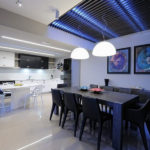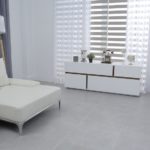For some interior designers, it’s easy to choose a design style. They’re staunchly French country, bohemian or beachy. For them, it’s easy to put together a cohesive room because their style is, well, cohesive.
And then, there’s you: you don’t quite know what your design style is because you like a little bit of modern and a little bit of old school. With such a diverse range of tastes, you have a hard time pinning down what you want a room to look like because there are so many different looks you like and want to incorporate.
Rather than throw your hands in the air and give up or, worse yet, settle on a single style just to make your life easier, keep reading: you might just have a transitional design sense, and you’re not alone in your love of a mix of styles.
What is Transitional Design?
Transitional design meets in the middle of contemporary and traditional tastes, creating a look that still feels timeless. In fact, it ends up looking like a fresh take on the traditional design schemes you might find in, say, your parents’ house.
You might see traditionally curved furniture made from a modern, shiny material — think: a traditional chest of drawers covered in pieces of mirror. But transitional design doesn’t start and end with the furniture you place in your room. Often, transitional design spaces incorporate traditional furniture choices and some accents, like crown molding, with more neutral, modern color palettes. Another key design feature are the accessories in the room — or lack thereof. Transitional design aficionados appreciate clean, clutter-free spaces with just the perfect amount of ornamentation.
Millenials have made this design style as big of a deal as it is today. The youngest generation of homeowners still like having the traditional touches of home, but want to put their own stamp on it by blending natural materials, modern updates and all the tech you could want to make your home run smoothly.
How Can I Pull It Off?
It may sound hard to come up with your own version of a transitional space, but the great thing about this hot design style is that it’s easy to replicate and customize. There are virtually endless ways to give your home this blended style.
Start off with the color of your space. Most transitional rooms blossom from a neutral palette in order to maintain modernity. It just so happens that many simple, neutral shades create a more calming, serene vibe, too.
Once you’ve chosen your color, look the rest of the room’s existing elements and work from there. If the space has a traditional fireplace with wooden mantel and overhead crown molding, for example, you’ll need to balance the scale with some modern, clean lines. A rectangular sofa without arms would do the trick, as would a piece of contemporary art hung over the fireplace.
Where you can get a bit more experimental is with the fabrics and textures you bring into your space once you’ve painted your neutral palette. You can add pops of color with fabric, or create interest with textures: contrasting a soft, sleek suede sofa with worn leather armchairs, for example, would be a great mix of new and old.
You can even incorporate this blend of old next to new in the kitchen, where a quick weekend project can update your cabinets. One myth of cabinet hardware in design is that you can’t update a traditional built-in simply by replacing its hardware with a more contemporary knob or pull. Thanks to the rise of transitional design, this is simply not true. Try the same treatment in your bathrooms to give those spaces a modern upgrade as well.
It’s important to remember as you accessorize to always keep it simple. One stunning accessory does the trick, as opposed to a bunch of tiny accessories filling a bookshelf or covering your coffee table. Place an extra-tall orchid at the center of your wooden dining table, for example, to draw attention to the traditional piece of furniture while still keeping it looking sleek and clean with a single accessory.
So… That’s It?
It’s true: your transitional design requires only a balance of what’s old and what’s new. You can easily find that middle ground on your own, updating traditional curves and ornamentation with clean, modern finishes and fixtures. And, by choosing this design style you guarantee your house will be fresh now and classic for longer.
However, if you’re struggling to find your design footing, don’t worry: you can find plenty of inspiration on sites like Pinterest, where more and more home designers are showing off their blended design schemes. You can also enlist the help of a design professional, who will bring your vision to life. No matter what, you’ll come out with a finished product that hits all the right notes.
Author Bio:

https://www.pinterest.com/kaceymya/
https://www.instagram.com/thedriftercollective/








